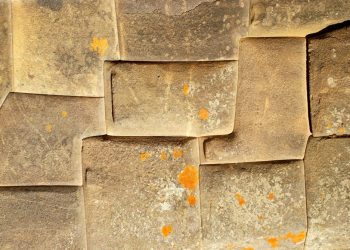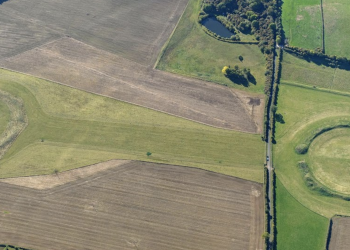After discussing the enigmatic Roman Flexible Glass, we continue our exploration of the ancient world with an object that, at least, exists physically – the Roman dodecahedron. Dating back to the 2nd to 4th centuries AD, these artefacts have been discovered across various parts of the former Roman Empire, including modern-day France, Germany, and the United Kingdom.
Despite the numerous findings, the true purpose of these objects remains a subject of debate among scholars. All we have on Roman dodecahedrons are theories. We have selected the most supported hypotheses that appear logical and plausible.
What is a Roman dodecahedron?
In a way, a dodecahedron looks like an ancient puzzle. Made from bronze and occasionally stone, it is a curious geometrical object with 12 flat sides in the shape of a pentagon. Each side has a circular hole of a different size, and the whole object is hollow. The last distinctive features are the knobs on each exterior corner.
More than a hundred dodecahedrons have been found in different locations once part of the mighty Roman Empire. The oldest examples date back to the 2nd century BC, and unfortunately, archaeologists have not found any mention of the device in any ancient texts.
Almost 300 years have passed since the discovery of the first dodecahedron in England, and yet, no progress has been made in solving this ancient mystery.
Was the Roman dodecahedron a military device?
Most of the original theories from the early 19th century revolved around military uses. Antiquarians believed that the Roman dodecahedron could be the head of a weapon. Such hypotheses are nowadays disregarded as none of the objects found are heavy enough to be considered dangerous when used as a weapon.
Instead, the most recent version was presented by an Italian physicist named Amelia Sparavigna, who suggested a highly plausible theory in 2012. Her idea suggests that the Roman Dodecahedron was used as a rangefinder as a military device. Theoretically, the holes of the device could be used to measure long distances.
Not that the measurements could be perfectly precise, but the ancient Romans could have figured the obvious method out. By aligning up two of the circles, they would always have the same result in the distance. So, if they had distances for all possible alignments that a Roman Dodecahedron could give, they could easily use them as a rangefinder.
This theory has supporting and denying facts that make the theory both believable and unbelievable. While it is a fact that most Roman Dodecahedrons have been found in military sites, none share the same size nor the same hole sizes. In other words, how could they have been used as rangefinders if they all have different sizes?
Was it an astronomical instrument?
Archaeology and history today are a lot more accessible than a hundred years ago. Therefore, the internet and social media play a huge role in unfolding the greatest mysteries of the ancient world. With this said, a website about Roman dodecahedrons appeared a while ago, suggesting that it is an astronomical instrument.
It presents some extensive academic data and information; overall, the theory seems highly plausible. To save you the effort of reading the whole website, the theory suggests that the ancient Romans used the dodecahedron to help their agriculture.
Using the holes of the device, they would examine the angle of sunlight during specific days, giving them crucial information about the critical days for agriculture.
Once again, the problem with this theory is the size of the different dodecahedrons. None share the same size, making it impossible to make identical calculations.
The dodecahedron as a measuring device
Another compelling theory suggests that the dodecahedrons functioned as measuring instruments. The varying sizes of the holes on each face could have allowed users to measure different calibres, possibly for standardizing coinage or other manufactured items.
This hypothesis is supported by the discovery of some dodecahedrons in coin hoards, indicating a potential association with trade or economic activities.
Perhaps a game?
Certain scholars have suggested that the Roman Dodecahedron may have been part of a child’s toy or some sort of a game for adults. Honestly, if it was a game, it should be for adults, as who would give such a heavy metal toy to their baby or small child?
This theory suggests that the objects are similar to ancient Roman dice, although they mostly had six sides. Plus, the simple fact that the holes on each side come in different sizes means that each side has a different weight.
If it was used as dice, it wasn’t a very thoughtful design. Perhaps they placed a ball with the same diameter as the largest hole, and they played a game where the purpose was to take the ball out first in some weird way. Who knows, the opportunities here are endless.
The dodecahedron as a religious artifact
Another prevalent theory posits that the dodecahedrons served a religious or ritualistic function. The intricate design and craftsmanship suggest they may have held symbolic significance.
This theory originated from a discovery on the border between Germany and the Netherlands. They found a grave with a well-preserved Roman Dodecahedron and a staff. This led to the theory that the device could have been used as the head of a sceptre with a particular function or purpose.
Some researchers believe the objects could have been used in religious ceremonies, possibly as tools for divination or as symbolic representations of the universe.
The lack of wear on many of the dodecahedrons implies they were not utilitarian objects, supporting the idea of a ceremonial purpose.
Alternative theories to consider
Now that we have concluded our five most believed theories and, honestly, the ones that sound most plausible, here are several other hypotheses to consider while you are still here.
Some scholars believe that the Roman Dodecahedron is connected to astrological signs. After all, there are 12 flat sides. Why would anyone not connect it to astrology when it was equally important in the ancient world?
Last but not least, one of the most plausible theories, and yet the simplest, is that it was a collective item that was more like a souvenir. I tend to believe this suggestion as most dodecahedrons found throughout the years have shown no signs of wear or usage.
In the end, could they have been nothing more than decorations, or was their function more complicated? Knowing the ancient Romans, I believe their story is much more curious than that.
Continued research and future discoveries may one day unravel the enigma of these fascinating objects, shedding light on their role in ancient Roman society. For now, we will only see the dodecahedrons in museums as mysterious artifacts from the Roman Empire.











